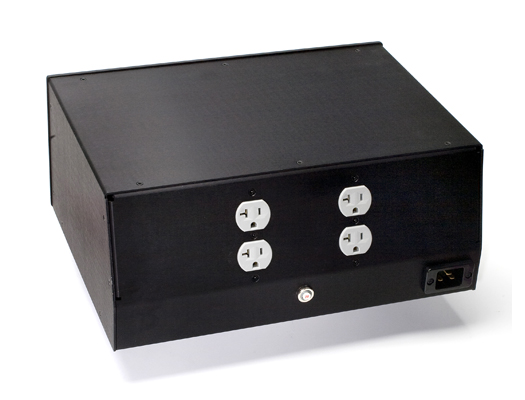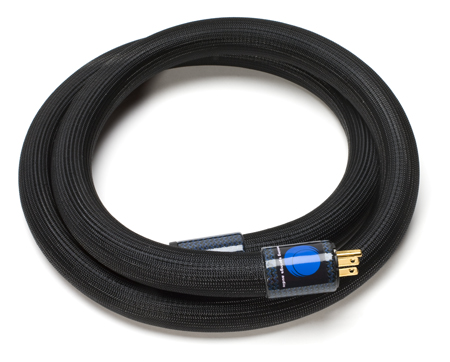 If you haven’t fully addressed vibration control in your audio system, that means you still have a final frontier to conquer. And the SRA Ohio Class XL+² platform is a great place to start your quest. I’ve seen my fair share of DIY attempts: granite slabs, maple boards, sand boxes, and inner tubes to name a few, many piled up like Dr. Seuss contraptions. While any of these alleged solutions will change the sound of your system, I’ve yet to hear one that consistently reveals more music throughout the frequency range. Often, gains are made in one area at the sacrifice of another.
If you haven’t fully addressed vibration control in your audio system, that means you still have a final frontier to conquer. And the SRA Ohio Class XL+² platform is a great place to start your quest. I’ve seen my fair share of DIY attempts: granite slabs, maple boards, sand boxes, and inner tubes to name a few, many piled up like Dr. Seuss contraptions. While any of these alleged solutions will change the sound of your system, I’ve yet to hear one that consistently reveals more music throughout the frequency range. Often, gains are made in one area at the sacrifice of another.
Until now. And trust me, I was highly skeptical until the very end. The cable world is renowned for its empty promises, and the field of vibration control is no different. Most of it is hit-and-miss. If you peel back the curtain, precious few anti-vibration vendors have any real credentials to back up their products.
Kevin Tellekamp, the brains behind SRA, is a music lover and audiophile, but he also has an extensive background in math, physics, and acoustics. Oh, and he holds more than 50 worldwide patents on vibration control. His “day job” involves solving vibration-related issues for NASA and the US Military (hence, the ship-related product names) along with some other very high-profile customers. At the time of this review, Tellekamp was working with a NYC hospital to isolate its CT scanner from intruding vibrations in order to increase its resolution.
Component Couture
Each of SRA’s Ohio Class XL+² equipment platforms is a made to order component. SRA takes many things into account when performing the necessary calculations to optimize a platform, for the given piece of equipment. The result is perfectly suited to your gear and according to SRA, their designs are “future proof.”
Each Ohio Class XL+² is designed and manufactured with a specific component in mind, but should you change or upgrade, as audiophiles have a habit to do, the platform can be recalibrated for the new item, at no cost to it’s original owner. In the rare case that this is not possible, a very aggressive trade in allowance will be made, provided your platform is still in excellent condition.
SRA currently has a database with thousands of different pieces of gear on file, but as Tellekamp pointed out, “if it’s not in our database, we’ll get the measurements.”
They call this Component Specific Design, and even take into account the exact type of footers used by each equipment manufacturer. Because of this, additional cones, balls, etc. and any kind of additional mass loading is not recommended as it will diminish the component specific design of the SRA isolation unit. Tellekamp is quick to point out that the Earth vibrates somewhere near 3 hz, “What on Earth, weighs more than the Earth? Mass loading is simply not effective.” Another critical aspect of the SRA designs is that they do not use any material in their products whose performance decreases over time. As anyone who has used a vibration control product using Sorbothane knows, this material compresses relatively quickly and loses its ability to damp vibrations, especially when stacked within an enclosure per Tellekamp.
Each Ohio Class XL+² is hand built and because of the different parameters involved can range in price from about $1,000 each to as much as $8,000 each. Lead-time from order to delivery is usually about a month. Tellekamp and his team consider every part of the design, including the room, and how its products interface with their surroundings. Be it rack based or floor based application, SRA always concentrates on three main problem areas first, regardless of any special circumstances, they are: Air-born energy, Floor based energy and equipment born energy, which proves to be largely dependent on the first two, but there are some residual vibrations internally from power transformers, etc.
The pair of platforms I received for my Burmester 911 mk.3 amplifiers cost $3,000 each and arrived in massive wood crates. Packaged more carefully than the $30k Burmester amplifiers they would be supporting, their construction quality immediately became evident; workmanship and finish are flawless. My review samples came in high-gloss black, but three standard colors are available and the platforms can be done in two optional custom colors for an additional cost. Tellekamp sent me another email stating, “They take about 2-3 days to achieve final effect, enjoy!”
At this stage of the game, I was still highly skeptical. With a 12-inch thick concrete floor and a solid-state amplifier, how could I be subject to vibration issues? Tellekamp was quick to correct me, “Vibration will travel quickly through this floor. Stand at one end in your bare feet and have someone bounce a golf ball at the other end, you will feel it unless there are deep voids or saw cuts separating the solid mass.”
Not wanting to risk the sound changing in the slightest by powering the amplifier on and off, a friend slid the platform into place under the first 911, while powered. Now, listening could begin in earnest!
In the middle of listening to some recent Blue Note remasters, I could immediately hear a darker background with instrument decay having a wider degree of contrast. Of course, this is where even the most seasoned listener may suspect that the mind is playing tricks – that new upgrade has to sound better. Moving on to a number of tracks that I was very familiar with, the change with the SRA platform was almost spooky. Everything I played possessed a more organic, relaxed feel, and didn’t come at the expense of any of the dynamic punch my system offers.
Over the next few days, these effects increased, and I felt psyched out by the whole experience. Every time I played something that I’ve heard many times before, more music came to the fore. It was time to make to the switch to the 911 that wasn’t supported by the SRA. What a difference. The soundstage collapsed somewhat and there was a level of cloudiness to the presentation that I hadn’t noticed before. Everything sounded slightly more electronic and less natural. The effect was akin to unplugging the amplifiers from the RSA Maxim power conditioner and plugging straight into the wall. Think about the impact being similar to the effect of making a substantial upgrade to a component. For example, when listening to the same phono cartridge on my Rega P3 and P9, the tonality is similar. But the P9 retrieves more detail and offers more dynamic contrast.
With a pair of identical amplifiers at my disposal, it was incredibly easy to go back and forth for comparison rather than to have to rely on aural memory. Because at this stage of the game, you want to believe that the shiny new thing makes a difference. And fortunately, the difference is not understated—the SRA platform offers a marked improvement in every way and takes nothing away from the musical performance when in place.
Though I’ve seen some hints and glimmers at what lurks inside the SRA platform, I still don’t know. But whether it’s some kind of unobtanium goo from Area 51 or a gigantic wad of Hubba Bubba, it works even better than claimed and like the monolith in 2001, it’s well camouflaged.
After spending considerable time with the SRA platforms, I consider them essential to my system’s performance and would put the effect on par with what I’ve achieved with careful attention to power line conditioning. If you have a system capable of great resolution and dynamic swing, you will notice about 50% of the effect that the SRA platforms offer instantly and the rest in about 48 hours. It’s not subtle.
While I can’t suggest placing the Ohio Class XL+² underneath your amplifier(s) highly enough, I would also suggest optimizing the rest of your system first, so that you can take full advantage of what the SRA platform has to offer. If you still have major room or setup issues, the added benefit of this component will not be as evident. Much like adding premium cable to your system, if you still have a big plasma screen between your speakers, or a large area of bare floor, these are much bigger bang for the buck improvements that need to be addressed first.
SRA will be sending us one of its Craz racks in the near future for evaluation, and we’re very anxious to observe the improvement it makes to the rest of the reference system. For now, I give the SRA Ohio Class XL Plus 2 platforms my highest recommendation. If you own a high-performance audio system, I guarantee it will offer a level of performance you didn’t know existed.
The SRA Ohio Class XL+² Equipment Platform
MSRP: Equipment dependent
Peripherals
| Analog source | AVID Acutus Reference SP w/SME V and Koetsu Urushi |
| Digital source | dCS Paganini (4 box stack) Sooloos Control 15 |
| Preamplifier | Burmester 011 |
| Power Amplifier | Burmester 911 mk. 3 |
| Speakers | GamuT S9 |
| Power | Running Springs Dmitri, Maxim and power cords |
| Cable | Shunyata Aurora |





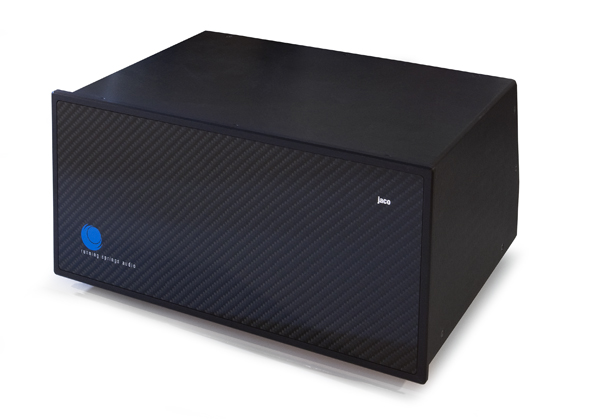 I’ve been using Running Springs power line conditioners with excellent luck for just over five years now and have upgraded my current reference system to their flagship products, the Dmitri (for all of my line level components) and the Maxim (for my power amplifier, on a separate 20 amp circuit), while the Haley that I purchased quite a few years ago is still working well in system two.
I’ve been using Running Springs power line conditioners with excellent luck for just over five years now and have upgraded my current reference system to their flagship products, the Dmitri (for all of my line level components) and the Maxim (for my power amplifier, on a separate 20 amp circuit), while the Haley that I purchased quite a few years ago is still working well in system two.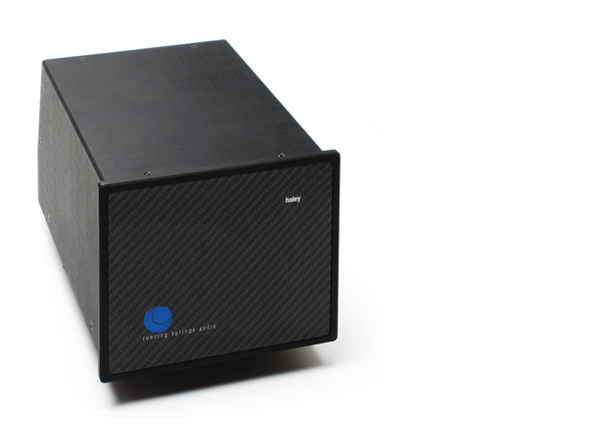 Definitely, a cost effective improvement
Definitely, a cost effective improvement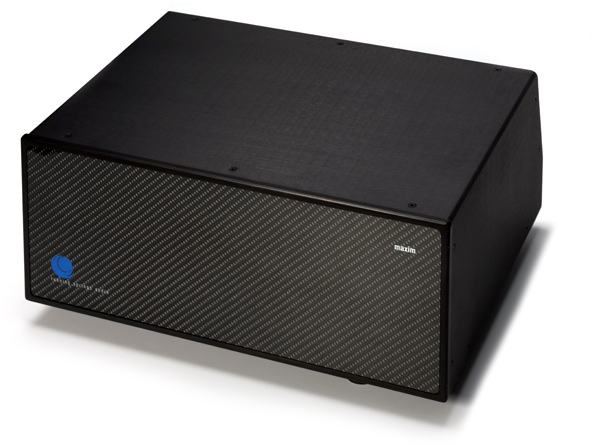 As a long time owner of Running Springs power conditioning products, I was very anxious to hear the effect of their newest power conditioner, the Maxim on my system. Unlike a number of other power product manufacturers at the recent Rocky Mountain Audio Fest that made outrageous claims for their power products (two of which have already been returned to their companies already), RSA designer Dan Babineau simply told me, “If you like your Dmitri, the Maxim uses the advancements I made going from the Haley/Jaco/Danielle series of our products to the Dmitri, but with additional filtering. It’s been optimized for high power/high current amplifiers.”
As a long time owner of Running Springs power conditioning products, I was very anxious to hear the effect of their newest power conditioner, the Maxim on my system. Unlike a number of other power product manufacturers at the recent Rocky Mountain Audio Fest that made outrageous claims for their power products (two of which have already been returned to their companies already), RSA designer Dan Babineau simply told me, “If you like your Dmitri, the Maxim uses the advancements I made going from the Haley/Jaco/Danielle series of our products to the Dmitri, but with additional filtering. It’s been optimized for high power/high current amplifiers.”